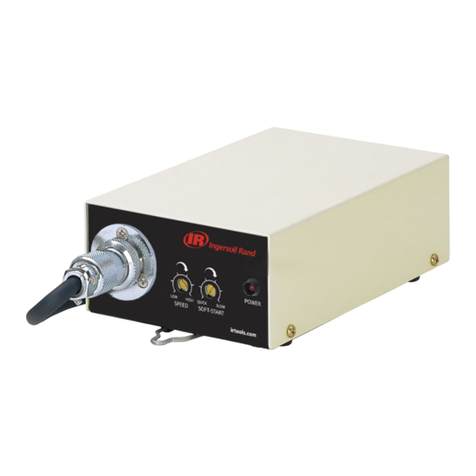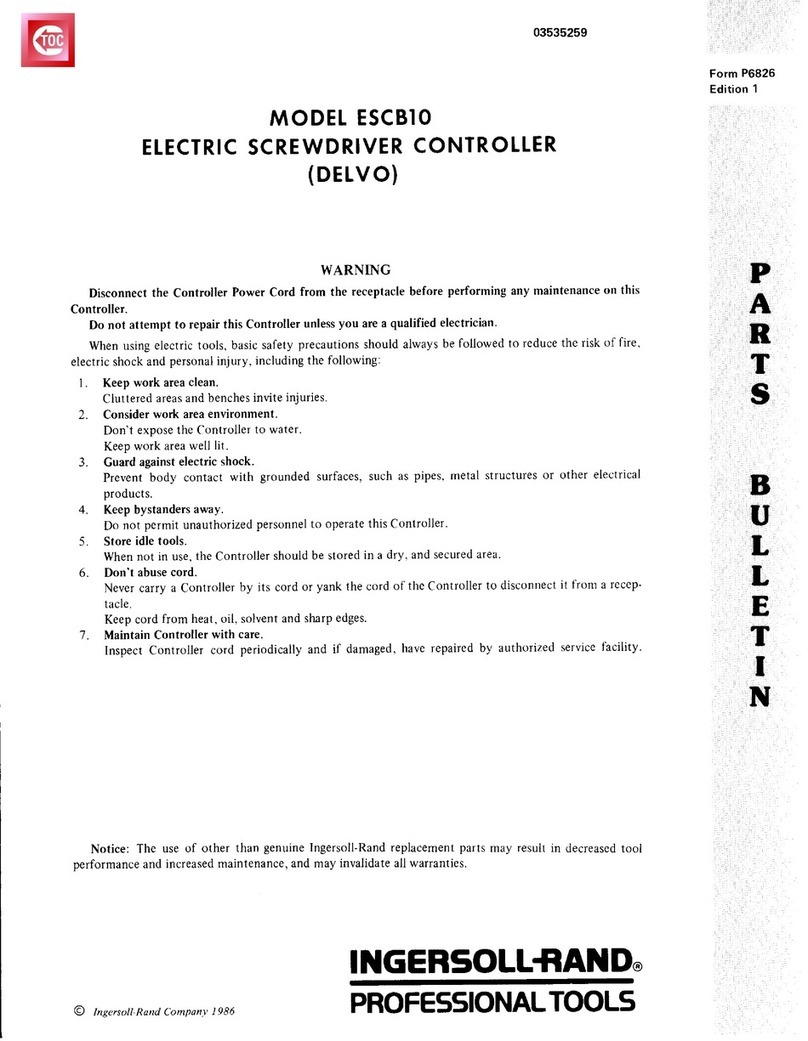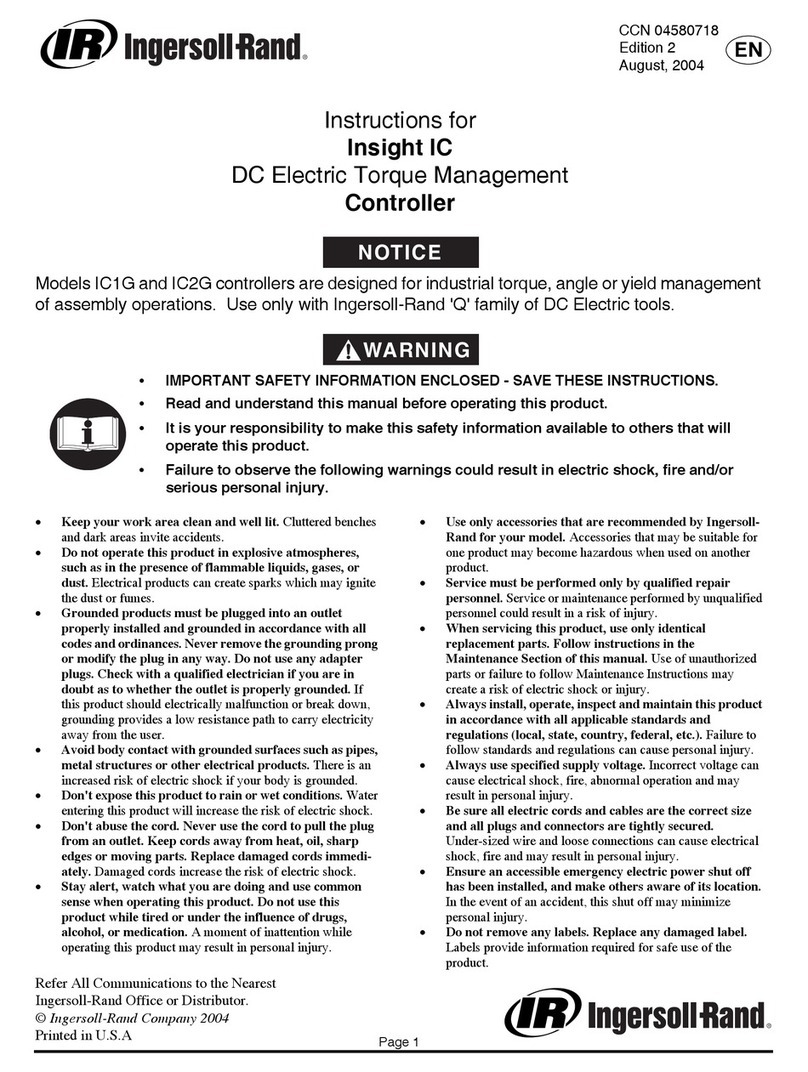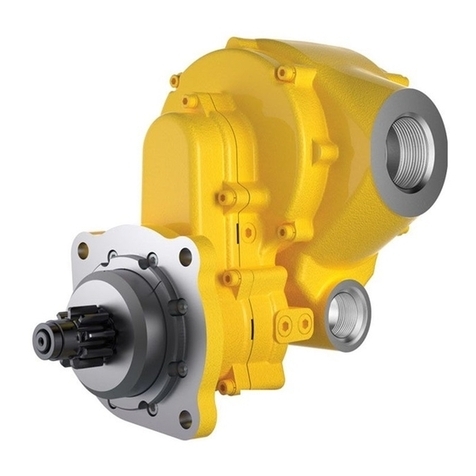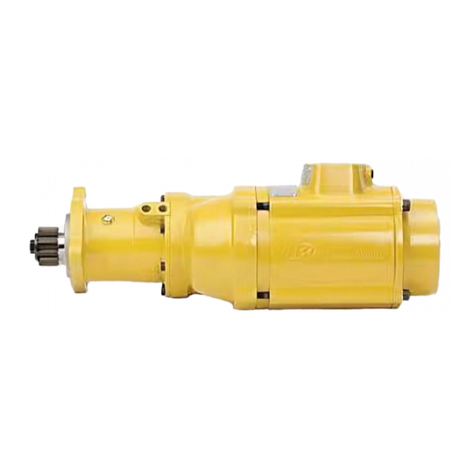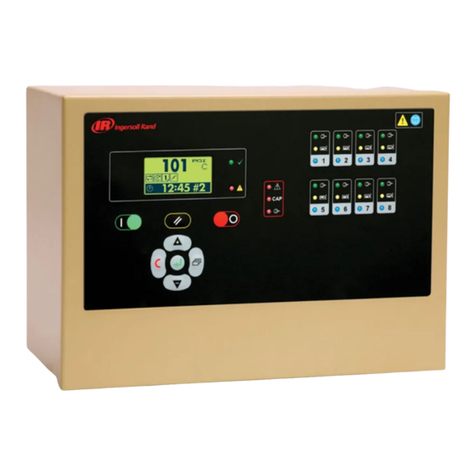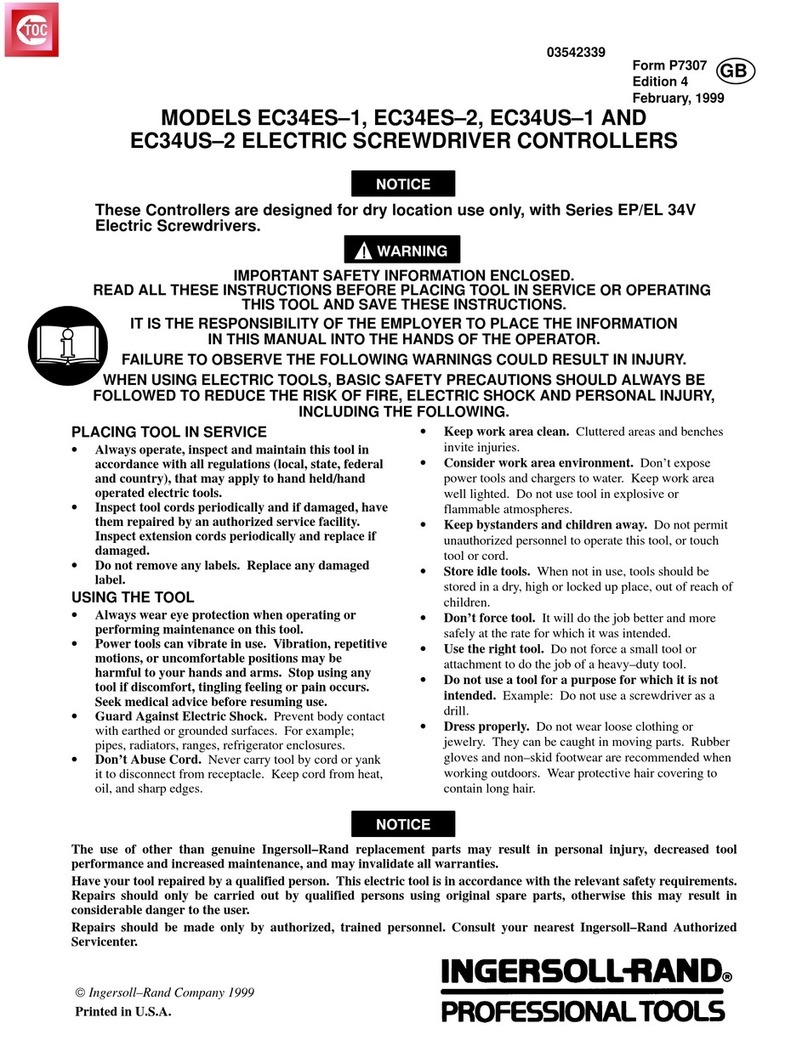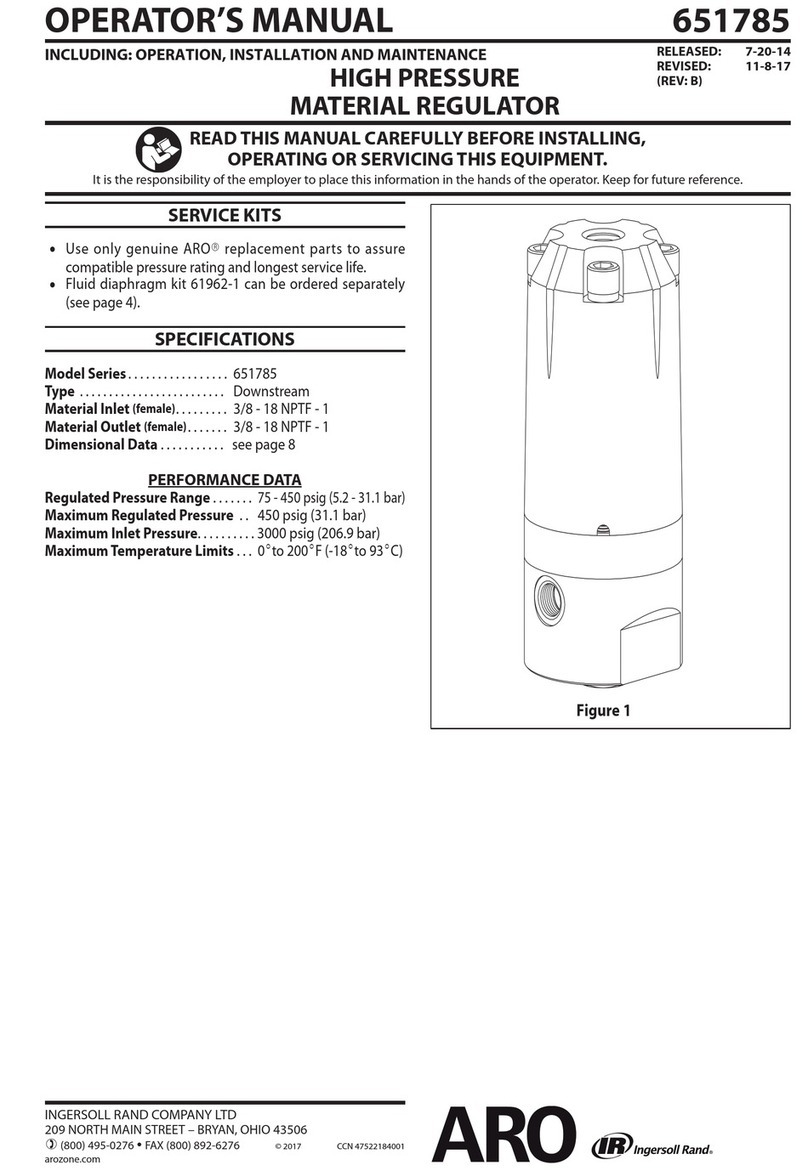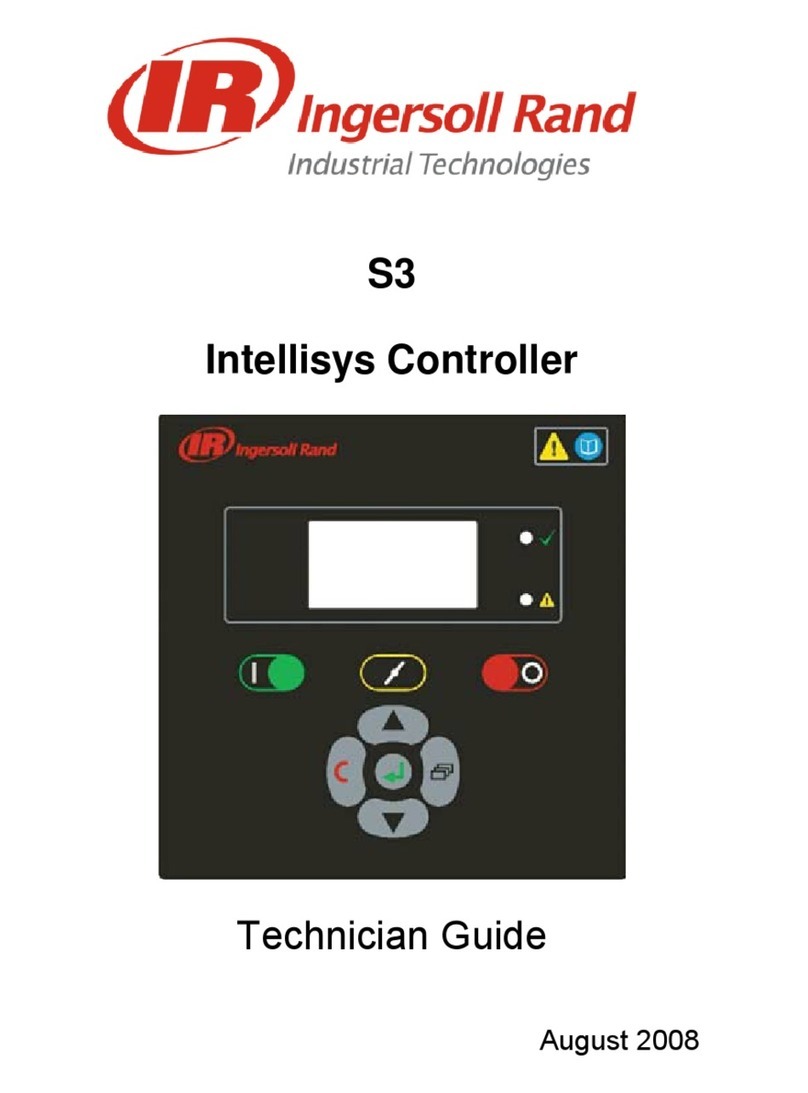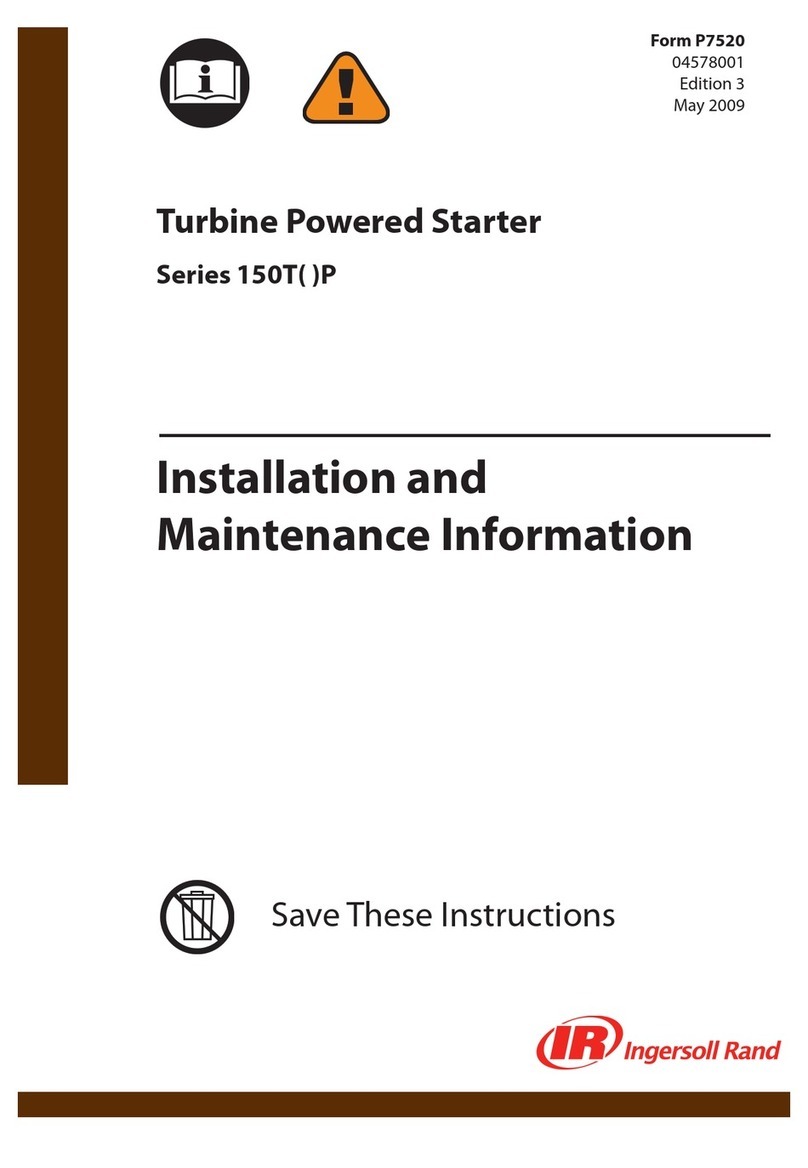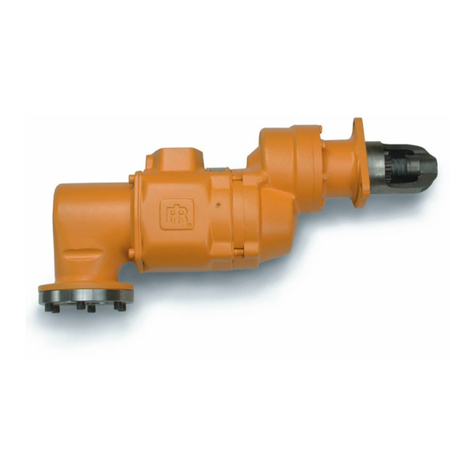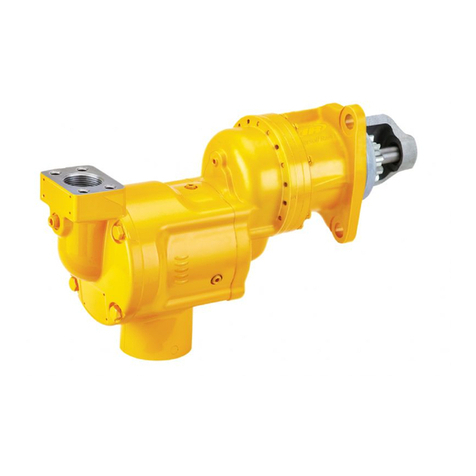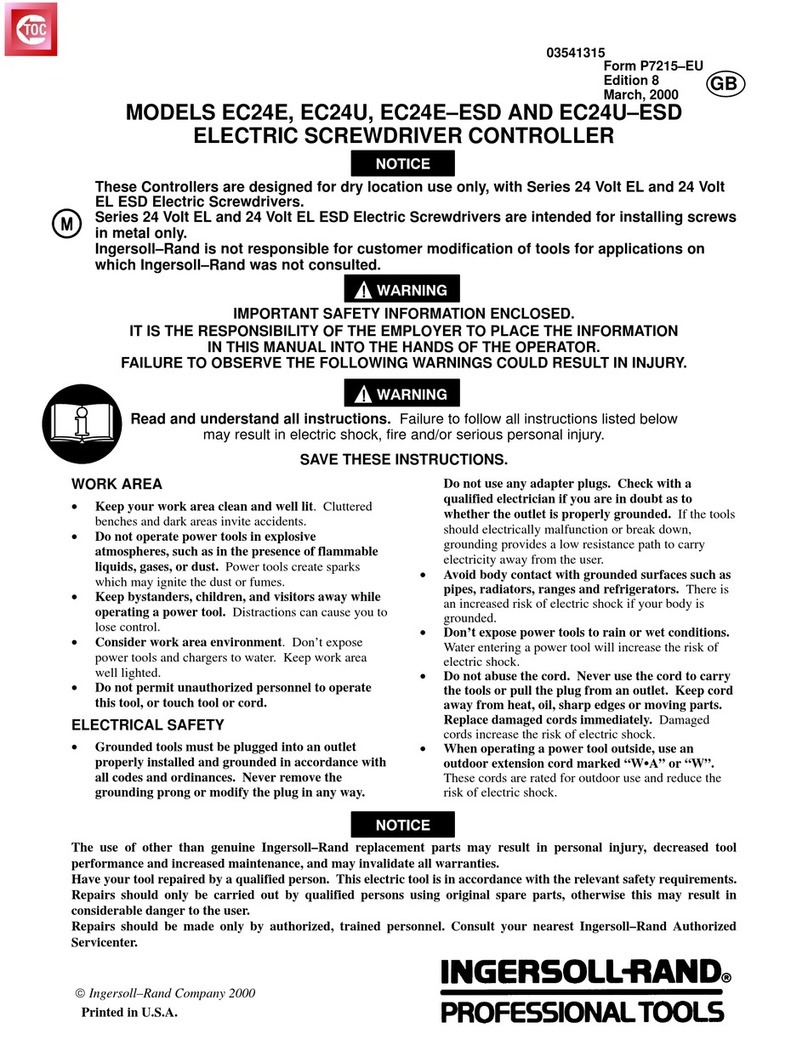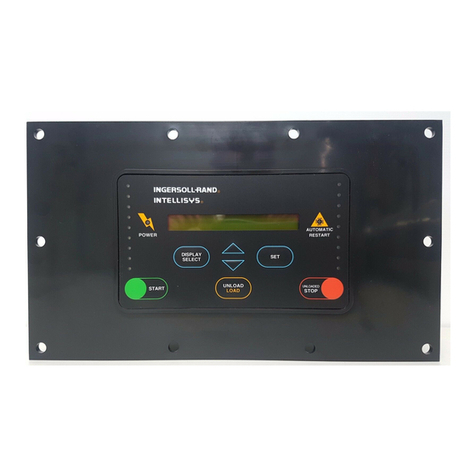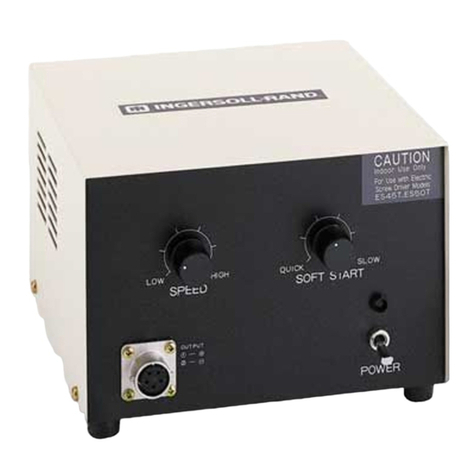
03531480_ed13 3
EN
Orientation of the Air Starter
If the factory orientation will not t your engine due to radial location
of the Drive Housing or location of the inlet and/or exhaust ports,
reorient the Starter as follows:
Look at the dimension illustration and note that the Drive
Housing (30) can be located in any one of sixteen radial positions
relative to the Gear Case (58). The exhaust port (Motor
Housing) (1) can be located in any one of four radial positions
relative to the Gear Case and the air inlet (Motor Housing Cover)
can be located in any one of four radial positions relative to the
exhaust port. Also, the Drive Housing can be installed on the
engine bell housing in any one of three radial positions.
Do not separate the Drive Housing from the Gear Case during
orientation or installation.
2. Study the engine mounting requirements and determine the
required orientation of the Drive Housing relative to the Gear
Case. If the Drive Housing has to be reoriented, remove the eight
Drive Housing Cap Screws (28) and rotate the drive housing to
its required position. Reinstall the Drive Housing Cap Screws and
tighten them to 28 ft-lb (38 Nm) of torque.
Do not separate the Motor Housing from the Motor Housing
Cover during orientation or installation.
3. Now that you have the Drive Housing properly oriented relative
to the Gear Case, notice whether or not the exhaust port will be
at the bottom and whether or not the inlet port will be favorably
located for hose installation. If either or both of these members
must be reoriented, remove the four Motor Housing Cover Cap
Screws (4) and rotate the Motor Housing and/or Motor Housing
Cover to its desired position. Reinstall the Motor Housing Cover
Cap Screws and alternately tighten them to 60 ft-lb (81.4 Nm) of
torque.
Mounting the Air Starter
Study the Piping Diagram. We strongly recommend that the
Starter be connected exactly as shown.
The air receiver tank for a Starter installation must have a working
pressure capability equal to or greater than the maximum
pressure at which the Starter will be operated.
Bleed o the air pressure through a valve or petcock. Do not
remove the plug from the tank while the tank is still pressurized.
3. If you are going to connect to a receiver tank that is already in
service, bleed o the air pressure by opening the drain valve.
Drain o any water that may have accumulated in the bottom of
the tank.
Make certain the connection between the SRV150 Starter Relay
Valve and the Receiver Tank is made to the inlet side of the Relay
Valve indicated by the word “IN” cast on the valve body.
1.
1.
2.
4. Using a 1-1/2” short nipple, install the SRV150 Starter Relay Valve on
the end of the receiver tank as shown in Dwg. TPC444-4 on EN-7.
5. Install the No. SMB-618 Starter Control Valve on the dash panel
(for vehicular installations) or some other appropriate panel (for
stationary installations).
6. Attach No. TA-STR-100 Starter Instruction Label to the control
panel adjacent to the Starter Control Valve.
7. Mount the No. 150BMP-1064 Air Pressure Gauge on or adjacent
to the control panel. It should be located where it is readily visible
to the operator of the Control Valve.
When connecting the Starter Control Valve to the Relay Valve,
make certain the hose is connected to the“SUMP” side of the
Starter Control Valve.
8. Connect the Starter Control Valve to the Relay Valve with 1/4”
#4 hose. Install a Tee in this line with a short feeder hose to the
Pressure Gauge.
9. Run a piece of heavy duty garden hose, or some other similar
large diameter hose from the Relay Valve on the receiver to the
starter location on the engine to determine the exact length of
1-1/2” #24 air hose required.
10. Attach the 1-1/2” #24 air hose to the outlet side of the Relay Valve,
and run the hose through the frame, etc. to its nal position at
the starter location.
11. At this point, determine whether or not it is practical to attach the
hose to the Starter before or after the Starter is actually mounted.
In many cases, it may be necessary to attach the hose to the
Starter before mounting.
12. Liberally grease the teeth on the ring gear with a good, sticky
gear grease or motorcycle chain lubricant. This will help promote
the life of the ring gear and the Starter Pinion.
13. Place the Starter into position and mount it on the ywheel bell
housing. Tighten the mounting bolts to 100 ft-lb (136 Nm) of torque.
14. Install a 1/4” #4 hose line from the “DEL”side of the Starter Control
Valve to the “IN” port on the Starter Drive Housing.
15. Install a 1/4” #4 hose line from the “OUT” port on the Starter Drive
Housing to the small pipe tapped port on top of the Starter Relay
Valve.
16. If the exhaust is not to be piped away, install a No. SS660-A674
Muer or No. SM450-A735 Road Splash Deector in the exhaust
port on the Motor Housing of the Starter.
17. If the engine on which the Starter is mounted does not have a
bell housing with a standard starter mounting, and a bracket had
to be manufactured for mounting, we recommend that you add
an additional support bracket at the motor end of the Starter.
There are four holes in the Motor Housing Cover for this purpose.
They are tapped M10-1.50 to accommodate metric cap screws.
18. Mount an HDL2 Lubricator on or near the Starter as shown in
Dwg. TPB978 on EN-4.
19. Pressurize the complete starting system and check every
connection with a soap bubble test. There must be no leaks.
